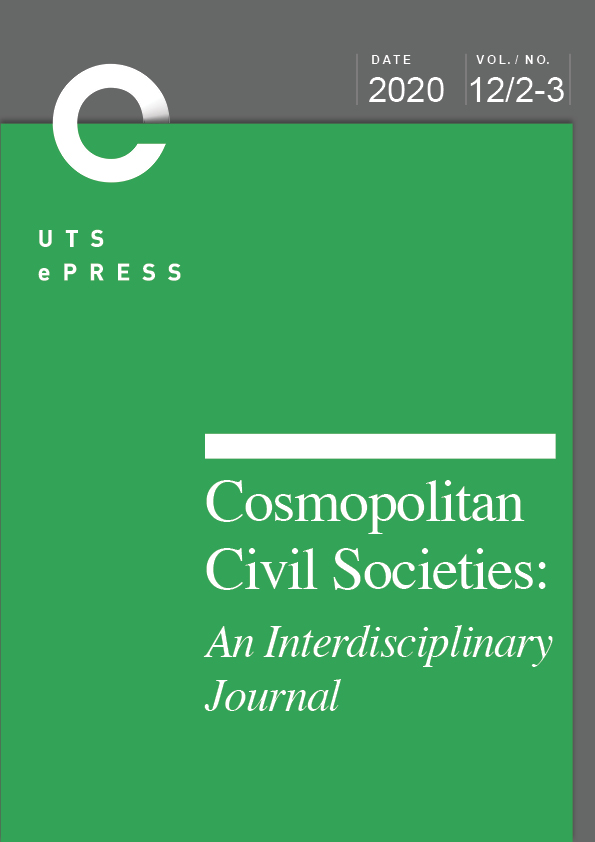Monstrous Transformations Cosmopolitanism and Nationalism in Post-Apartheid Afrikaner Art
Main Article Content
Abstract
According to Ulrich Beck, the breakdown of nation-state power and the migration of people, culture and ideas through neoliberalism provides us with a unique historical moment that simultaneously holds the potential for unparalleled cosmopolitanism and rising xenophobia. This essay further explores and problematizes this distinction through an analysis of the video art and music of the rap-rave group Die Antwoord and the photographer Roger Ballen, both of which provide images of Afrikaner Identity with differing ramifications for the formation of cosmopolitan identities. In both, figures become living collages, their anatomy mixes with animals and inanimate objects, and they transform into stark colors of black and white. The cosmopolitan becomes something monstrous and frightening. If an understanding of this xenophobic seed embedded in cross cultural soil is placed in the context of the larger history of capitalist market expansion, within the cyclical movement of cosmopolitanism and nationalism in South Africa, then discourses of monstrous transformations can be seen as obfuscating cosmopolitanism and xenophobia as alternatives opposing one another – as dialectically related phenomena. Interactions between groups within capitalism might lead to innovative mixtures but only in ways that quietly reinforce differences which surface when competition over resources occurs in hierarchical social relationships. Through analyzing how identities fuse in the works of Ballen and Die Antwoord, the following article will display both the space of critique and the danger of co-option of cosmopolitan identities.
Article Details
Issue
Section
Authors who submit articles to this journal from 31st March 2014 for publication, agree to the following terms:
a) Authors retain copyright and grant the journal right of first publication with the work simultaneously licensed under a Creative Commons Attribution License that allows others to share and adapt the work with an acknowledgement of the work's authorship and initial publication in this journal.
b) Authors are able to enter into separate, additional contractual arrangements for the non-exclusive distribution of the journal's published version of the work (e.g., post it to an institutional repository or publish it in a book), with an acknowledgement of its initial publication in this journal.
c) Authors are permitted and encouraged to post their work online (e.g., in institutional repositories or on their website) prior to and during the submission process, as it can lead to productive exchanges, as well as earlier and greater citation of published work (See The Open Access Citation Advantage Service). Where authors include such a work in an institutional repository or on their website (ie. a copy of a work which has been published in a UTS ePRESS journal, or a pre-print or post-print version of that work), we request that they include a statement that acknowledges the UTS ePRESS publication including the name of the journal, the volume number and a web-link to the journal item.
d) Authors should be aware that the Creative Commons Attribution (CC-BY) License permits readers to share (copy and redistribute the work in any medium or format) and adapt (remix, transform, and build upon the work) for any purpose, even commercially, provided they also give appropriate credit to the work, provide a link to the license, and indicate if changes were made. They may do these things in any reasonable manner, but not in any way that suggests you or your publisher endorses their use.
For Volume 5 No 3 (2013) and before, the following copyright applied:
Authors submitting articles to UTSePress publications agree to assign a limited license to UTSePress if and when the manuscript is accepted for publication. This license allows UTSePress to publish a manuscript in a given issue. Articles published by UTSePress are protected by copyright which is retained by the authors who assert their moral rights. Authors control translation and reproduction rights to their works published by UTSePress. UTSePress publications are copyright and all rights are reserved worldwide. Downloads of specific portions of them are permitted for personal use only, not for commercial use or resale. Permissions to reprint or use any materials should be directed to UTSePress.
